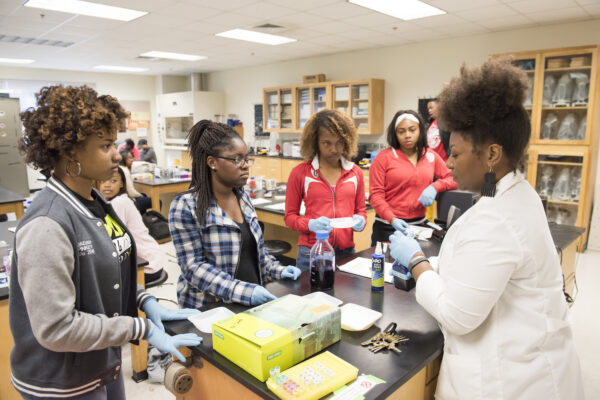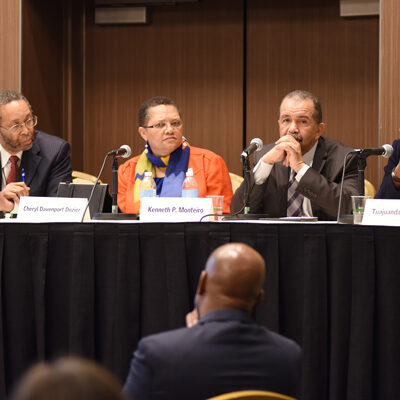Increasing Investment in HBCUs
Title: A Call to Action for HBCU Investment
Authors: Andre Perry and Anthony Barr
Source: Brookings Institution
Attention has focused in recent years on public underinvestment in historically Black colleges and universities (HBCUs). A new report from the Brookings Institution now sheds light on how HBCUs can build wealth from private capital through banks, philanthropies, and community development financial institutions (CDFIs).
The report highlights the importance of HBCUs as engines of economic mobility for students as well as the regions they are located in. On average, Pell-eligible students at HBCUs are more likely than their peers at predominately white institutions (PWIs) to move into a higher income quintile (p. 10).
Yet many HBCUs continue to face discrimination from financial institutions. This has led to detrimental effects for HBCUs in several ways, including lower endowments compared to PWIs. In 2020, the combined total for HBCUs with the largest endowments was $2 billion, compared to the top PWIs, which had a total of $200 billion (p. 7). The report provides a roadmap for HBCU leadership to boost investment in their institutions, allow them to further serve their students and communities, and offers six steps for action:
- Build trust and familiarity between CDFIs and HBCUs. CDFIs are encouraged to establish communication channels with HBCUs and gain an understanding of how resources and investment can be shifted to benefit HBCUs.
- Devise an HBCU-backed theory of change and power. To increase their space in the private capital market, the report argues that HBCUs should build upon their current collaboration efforts between institutions.
- Translate social and knowledge capital into collateral for capital markets. Traditional financial institutions may not understand the full value that HBCUs hold. As HBCUs are a primary driver of economic growth in their communities, it is crucial for lenders and CDFIs to take a holistic approach to evaluating their return on investment (p. 8).
- Collaborate across sectors in response to challenges and opportunities. The report argues that the HBCU sector and groups of CDFIs should engage in national dialogue networks to further investment.
- Develop revenue support for students from external projects and development. HBCUs should consider how increased financial support could go beyond the conventional approaches to student success that may extend beyond the campus. Community health centers, affordable housing, and supporting small and local businesses would improve the localized environment for students.
- Combine balance sheets to lend a pool of HBCUs versus an individual HBCU. The report highlights ways that HBCUs can garner influence with financial institutions by using their collective power. Together, HBCUs can describe how increased investment in the sector would improve outcomes for students and provide a boost to local economies across the country.
The full report can be accessed here.
—Alexander Cassell
If you have any questions or comments about this blog post, please contact us.


